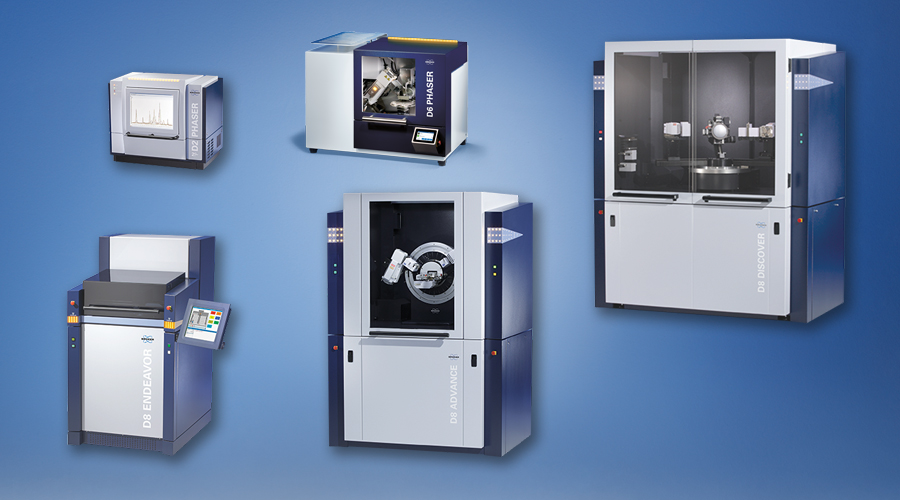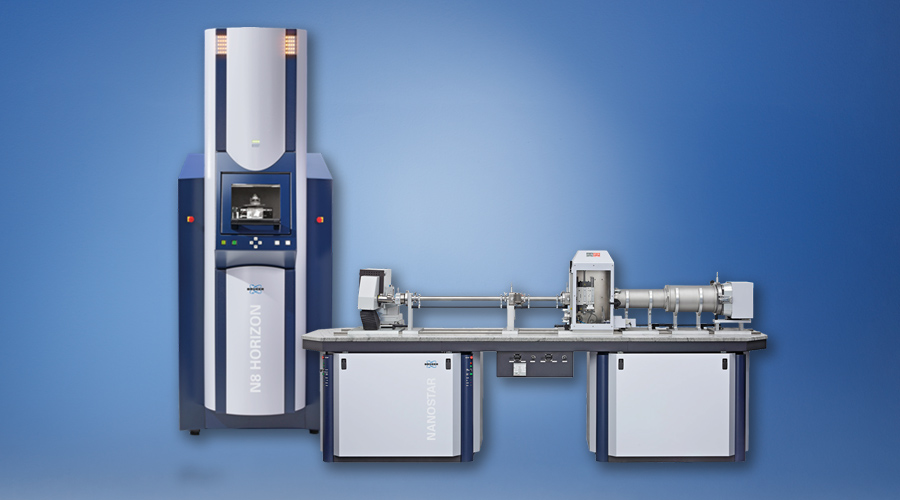DIFFRAC. SAXS
Bright spot
Used to analyze the SAXS data fully functional software package
DIFFRAC. SAXS software can make a peacekeeping two-dimensional SAXS data interpretation of an unprecedented more simple, rapid and accurate.It is not only equipped with the advanced comprehensive and efficient data processing algorithms, is both simple and flexible operation.Data display, data compaction and analysis each step in the process of seamless integration, ensure the accuracy of the use of convenience and results.
- Data import and display
- Data preprocessing
- SAXS characteristic curve and evaluation
- Absolute intensity and the calculation of molecular weight
- Based on the model fitting for distance distribution function (PDDF)
- The transformation of the data and reports
The characteristics of
Data import and display
DIFFRAC. SAXS can display a peacekeeping two-dimensional SAXS data, as well as Nanography figure.support的数据格式有brml、raw、ascii(拥有不同单位的两列数据格式xy 和三列数据格式xye)、gfrm和tiff。
Data preprocessing
DIFFRAC. SAXS can directly read scattering signal of nanostructures.
Carbon is the first step, the use of glass as a benchmark, or based on the primary beam intensity ratio, to determine the transmittance of the sample.Then, through the optimization of the algorithm will get the one-dimensional two-dimensional data integral data for further evaluation.
With DIFFRAC. WIZARD set up data measurement model, DIFFRAC. SAXS can automatically through rate calculation and the background correction, without user intervention.
SAXS curve unique way of display and analysis method
Traditionally, SAXS curve shows that for a particular axis curve of scale, in order to quickly check in the form of chart data quality, and to evaluate the parameters of the intuitive, such as Guinier, Porod and Kratky graph.DIFFRAC. SAXS allowed by name easily select all graph type.Radius of gyration (Rg), zero point scattering intensity, scattering Porod invariant and specific surface area and other related parameters can be completely, by step by step procedure automatically or interactively.
Based on the fitting of the model
DIFFRAC. SAXS by using geometry (sphere, cylinder, etc.) or a special polymer model (chain, Gaussian star, etc.) for the solution of the nano structure modeling directly, and can be carried out on a SAXS data nonlinear least-square fitting.It can also consider the effect of polydispersity and concentration, making sample characterization of more complete.Corresponding model parameters are determined by fitting the experimental curve of SAXS to.
Distribution function of distances
Distribution function of distance (PDDF) p ® represents the scattering particles in the distribution of the distance between any two points.PDDF is a function of the size and shape of the particles, through Fourier transform from scattering curve.
Technical parameters
DIFFRAC. The technical parameters of SAXS
| version | The latest version of software is DIFFRAC SAXS V1.0 |
| Analysis method | Interactive and automatic Guinier analysis can provide radius of gyration, zero point scattering intensity data, etc. Interactive and automatic Porod analysis can provide Porod scattering invariants, specific surface area and other data. Kratky analysis Through into the absolute strength to calculate the molecular weight of proteins. The distance distribution function (PDDF) Based on nano particle shape model and can consider the effect of polydispersity and interaction of one-dimensional SAXS data for nonlinear least squares fitting. |
The operating system |
Windows 7, 8 and 10 Both 32-bit and 64 - bit |
For more information
DIFFRAC. SAXS resources
Print, application instructions and report
- DIFFRAC. SAXS comprehensive analysis of the SAXS
- SWAXS application in protein drug development: specific surface area of the freeze-dried fibrinogen, crystallinity and solubility
- Small Angle X-ray scattering in the application of modern drug discovery: the emulsion delivery systems (SEDDS)
- The N8 HORIZON: the polymer clay nanocomposite SAXS research
support
Let your DIFFRAC. Keep the latest version of the SAXS
Free maintenance updates
Through a free DIFFRAC. SAXS maintenance updates, your SAXS version can be updated to the latest version.No matter what your SAXS permission level is, you can via www.brukersupport.com as a free download the latest maintenance update.
Download the steps
- In the "brooke Customer Support center (Bruker Customer Support)" on the registration
- Click on the "software" button
- Search for "DIFFRAC. SAXS maintenance updates"
- Download the update
Bug fix
By making your DIFFRAC. SAXS keep the latest version, no matter what permission level is, you have the right to use all the patches to the current version and to repair all previous releases.DIFFRAC. SAXS maintenance updates are cumulative, thus it can be used for any previous versions.
What is the upgrade?
DIFFRAC. SAXS maintenance update doesn't come with new features.If you want to use the function, introduced in the new version, you need to buy the latest DIFFRAC. SAXS upgrade services.





